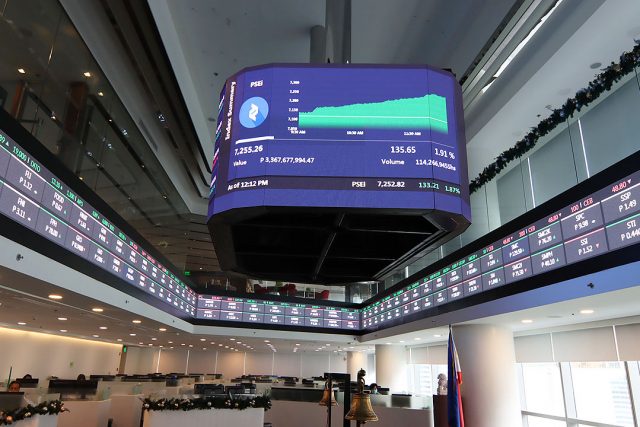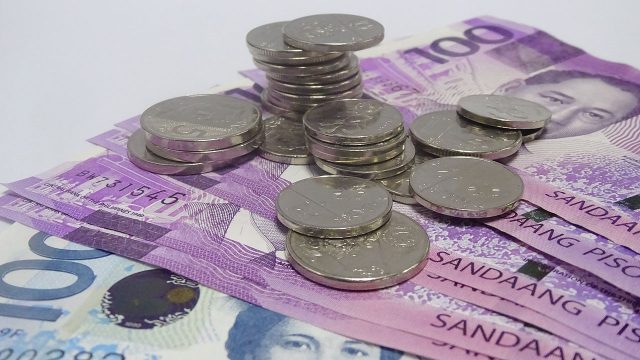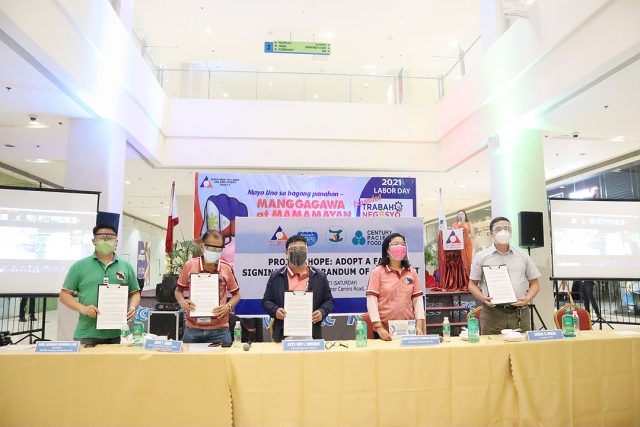(Part 3)
Some of us economists are incorrigible prophets. We never give up fathoming the future even if we had made some terrible forecasting booboos in the past. Combining our expertise in statistics in analyzing past economic trends and our allied training in the political and other social sciences, we continue to dare to foretell the future not only about specific economic trends such as GDP growth, inflation, stock market prices, oil prices, and exchange rates. We also with a straight face tell governments and business people which countries will succeed in attaining high-income levels and which ones will be stuck in the middle-income trap, or, worse, stagnate as low-income economies.
As I wrote in the first part of this series of articles, at the beginning of the Third Millennium an economist from Goldman Sachs by the name of Jim O’Neill coined the acronym BRIC to announce that Brazil, Russia, India, and China would be the star emerging markets during the first decades of the 21st century. Hardly a decade had passed when Brazil and Russia mismanaged their respective economies and dropped out of the list of attractive emerging markets in which to invest. Among the “Next 11” emerging markets identified by Mr. O’Neill (Egypt, Indonesia, Iran, Mexico, Nigeria, Pakistan, Bangladesh, the Philippines, South Korea, Turkey, and Vietnam) only South Korea and Vietnam can be considered to have lived up to his expectations during the first decade of the 21st century. The others either stagnated as low-income countries such as Nigeria or fell into the middle-income trap such as Mexico and Turkey.
At the beginning of the second decade of this century, another economist tried his luck identifying the nations that would lead the emerging markets in economic growth in the decades ahead. In what became a best seller, Ruchir Sharma, head of Emerging Market Equities and Global Macro at Morgan Stanley Investment Management, identified what he called the “breakout nations.” In a book entitled Breakout Nations: In Pursuit of the Next Economic Miracles, Sharma came out with his own list: the Czech Republic, Indonesia, Nigeria, the Philippines, Poland, South Korea, Sri Lanka, Thailand, and Turkey.
His prognostication about the Philippines hit the mark for the second decade of the 21st century. As we reported in the second part of this series, the Philippines was one of the fastest growing emerging markets during the last decade, averaging an annual GDP growth rate of 6.4% during the period 2011 to 2019, slowing down only as one of the numerous victims of the COVID-19 pandemic in 2020. As mentioned in a review of the book by Katherine Visconti of Rappler (July 3, 2012), Ruchir Sharma expected the Philippines to be transformed from the “sick man of Asia” to become a “breakout nation” in the coming decade — or one that beats expectations and does better than peers in the same income class. Sharma postulated that the Philippines would have to grow at 5% or faster to be a breakout nation. The record shows that the Philippines did even much better at over 6%.
What Sharma cited as reasons for his optimism about the Philippines reminds me of the various eulogies that came out from both business and political leaders after the recent demise of Benigno Aquino III, who was President from 2010 to 2016, precisely at the start of the breaking out of the Philippines from decades of being known as the Asian laggard. The most recent accolade given by an economist to President Nonoy Aquino appeared in this paper on Aug. 25. Economist Andrew Masigan wrote in his column entitled “Good governance is good economics,” that good governance characterized the term of President Noynoy: “On the back of good governance and the judicious use of funds, the Philippines improved in all development indices including economic competitiveness, ease in doing business, economic freedom, corruption perception, innovation, rule of law, and gender equality. The economy experienced an accelerated average GDP growth rate never before seen since our independence.” Being written by an economist, the article was replete with economic data highlighting the accomplishments of President Noynoy.
As Rappler’s Visconti wrote in her review of the book: “Sharma largely credits President Benigno Aquino III with setting the stage for stronger economic growth. He said that when he visited in early 2010 before Aquino was sworn in, ‘the Philippines was still the undisputed laggard of Asia, a nation mired in chronic incompetence. But the country is no longer a joke under Aquino, noted Sharma. In fact, since Aquino assumed office, the country has experienced a series of international credit ratings upgrades, the stock market has become one of the strongest performers in the world, all while inflation has stayed stable and relatively low….”
Sharma balanced praise and criticism, writing that Aquino was originally dismissed in foreign circles as an unimpressive 51-year-old bachelor who had lived most of his life with his mother and had not made much of a mark in a low-profile career as a Philippine senator. Some critics today still bring up the “wimp” criticism against President Noynoy. Sharma in 2012 credited the former President with appointing “competent technocrats” and not letting investors hold him “hostage.” Sharma concluded that the Philippines was poised to resume a period of strong growth, commenting that President Benigno Aquino III probably had just enough support and looked likely to generate just enough reform momentum to get the job done. He did get the job done, with the economy growing at the highest annual average GDP growth rate of all presidential terms since the time of President Marcos.
What Sharma mentioned as a major reason for his predicting success under President Noynoy Aquino is a key to understanding one of the strong fundamentals outside observers perceive about the Philippines that make a good number of international think tanks and financial institutions think highly of the Philippine long-term economic future today. His “appointing competent technocrats” was really a continuation of the long-time practice of presidents even during the time of President Marcos. What slowed down the economy was the practice of many of the previous presidents to give special treatment to cronies, oftentimes in contravention to the advice of the technocrats. This crony capitalism caused the downfall of the Marcos regime in the last year of his Presidency. Rodrigo Duterte may also suffer a similar fate if it can be proven that he gave special treatment to his “Davao cronies” like Senator Bong Go, Chinese national Michael Yang, and others involved in the medical supplies scandal attributed to Pharmally International Holdings Co., Ltd., a company related to Pharmally Pharmaceuticals Corp. which bagged P8.9 billion worth of contracts for “overpriced” pandemic supplies. In great contrast, Noynoy Aquino not only appointed some of the best people to manage the economy but, as Sharma observed, did not allow himself to be hostage to investors.
This long period during which some of the best professionals were appointed to such crucial economic agencies as the Central Bank, the Department of Finance, the National Economic and Development Authority, the Department of Trade and Industry, the Department of Public Works and Highways — the government agencies most involved in delivering economic growth — accounts for the strong institutions that we now have that can guarantee long-term growth. That is why I was not surprised when the prestigious weekly publication, The Economist, at the very height of the ongoing pandemic in May 2020, gave a high ranking to the Philippines in a list of selected emerging economies ranked on four measures of financial strength. In a list of 66 emerging markets, the Philippines was ranked No. 6, besting such countries as Thailand, Saudi Arabia, China, Vietnam, Indonesia, the UAE, India, the Czech Republic, Mexico, Brazil and others among its peers. I was not surprised either when the Japan Credit Rating Agency upgraded the Philippines from BBB+ to A- just before the pandemic.
I can only explain this high esteem that outside observers have for our financial stability to the strong institutions in the monetary, fiscal, and other macroeconomic sectors that we have built over a period of half a century, thanks to very competent technocrats who have been appointed through the decades by the successive political leaders, some of whom left a lot to be desired in their really serving the good of the country. These competent technocrats have painstakingly and slowly built the strong institutions we now have. Among our neighbors, such as Singapore, Taiwan, and even South Korea, this institution building took a much shorter time because crony capitalism was minimized. In a future article in this series, I will discuss the special case of South Korea.
I reckon that The Economist gave a high rating to the Philippines because of the ability of our strong institutions run by technocrats to keep our debt-to-GDP ratio during normal times at a very manageable level of 30-40% and our fiscal deficit at the prudent ratio of 3.5% of GDP. They have also been witness to the Central Bank of the Philippines being led successively by technocrats who were systematically rated as the best Central Bank governors in the Southeast Asian region. Those who look beyond this present Administration are convinced that with this long tradition of the best minds being appointed to head the important economic and financial institutions, the tendency of our democratic society to elect political leaders who are not exactly the best you can find among the aspirants will not be an insurmountable obstacle to our economy growing at least at the 6-7% rate we have experienced in the recent past. It is notable, in this regard, that despite the very evident defects of the present President, the Philippine economy continued to grow from 2016 to 2019 at the same pace as it did during the “breakout” period of Benigno Aquino III. The same explanation can be given: President Duterte appointed some of the most competent professionals to run the economy and did not interfere with how they carried out their respective jobs, which cannot be said of the Department of Health and related agencies.
Bernardo M. Villegas has a Ph.D. in Economics from Harvard, is Professor Emeritus at the University of Asia and the Pacific, and a Visiting Professor at the IESE Business School in Barcelona, Spain. He was a member of the 1986 Constitutional Commission.
bernardo.villegas@uap.asia













